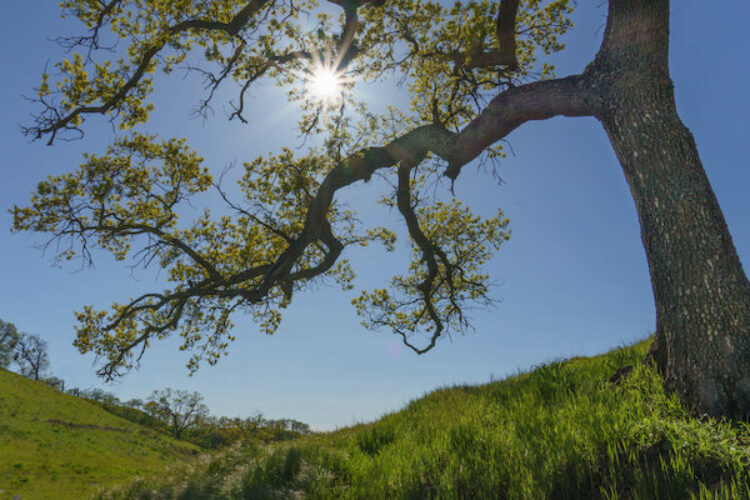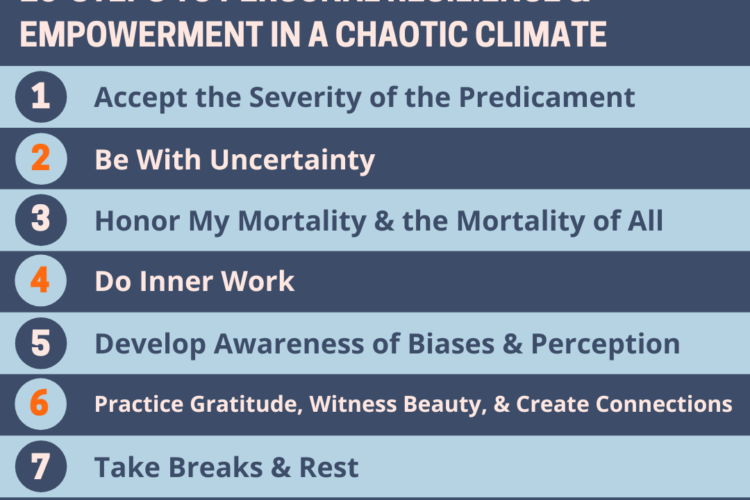Earthcare, Energy, and the Right Use of Things
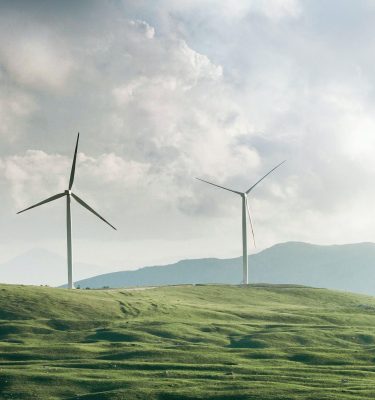
TURNING OVER A NEW LEAF. While casting about for ways to introduce this article about changing wasteful lifestyles, one of my favorite movies broke to the surface: A New Leaf (1971, **½) is about a middle-aged playboy (Walter Matthau) who has recklessly squandered his inheritance on high living. There is a hilarious but poignant scene where the spendthrift’s accountant tries to explain to him that, after years of warnings, he has just drawn down the last of his invested capital. As before, the man has no real concept of what this means. It is only when his butler quits and movers start hauling out the furniture that fiscal reality starts to sink in.
As a comedy, the story has a happy ending: Our hero marries a rich heiress (Elaine May) and continues living in comfort-but only after “turning over a new leaf” and coming to terms with the financial facts of life.
What does this story teach us about changing wasteful lifestyles? For me it mirrors with startling clarity our high-living society’s reckless consumption habits. Like the movie’s clueless hero, our leaders and public alike seem unable to grasp the idea that the world is finite and that a sustainable future is possible only if we discipline ourselves to live on interest (renewable resources) while carefully conserving our natural and social capital. As in the movie, we narrowly escaped self-inflicted ruin once: After decimating the forests of Europe and North America, we were able to rescue our foundering industrial enterprise by “marrying into” fossil fuels.

But that was our last chance: There is no other source of ecological wealth to turn to if we blow this one. We need to turn over a new leaf and come to terms with the ecological facts of life.
Paralleling the role of the movie’s panicky accountant is the group of 1,700 of leading scientists, including the majority of Nobel Laureates, who issued the “World Scientists’ Warning to Humanity” in 1992, in connection with the UN Earth Summit.
From the document’s introduction: “Human beings and the natural world are on a collision course. Human activities inflict harsh and often irreversible damage on the environment and on critical resources. If not checked, many of our current practices put at serious risk the future that we wish for human society and for plant and animal kingdoms, and may so alter the living world that it will be unable to sustain life in the manner that we know. Fundamental changes are urgent if we are to avoid the collision our present course will bring about.”
Now, a rational person might expect such a warning to be trumpeted by all the news media as the story of the millennium, no less significant than the coming of World War III. Can you believe, the scientists’ warning generated only a few column inches in the back pages of a few major newspapers before it dropped out of sight?
And now, after another 12 years that the scientists said we couldn’t afford to waste, are we any wiser? Will we wait until nature’s movers start hauling out the furniture? If cold scientific facts can’t seem to shake us out of our blissful denial, what will?
I don’t have the answer, but I do find clues in the work of film makers, writers, artists, and poets, whose specialty is cultivating the human imagination. Before we can make a sustainable world, we need to visualize it.
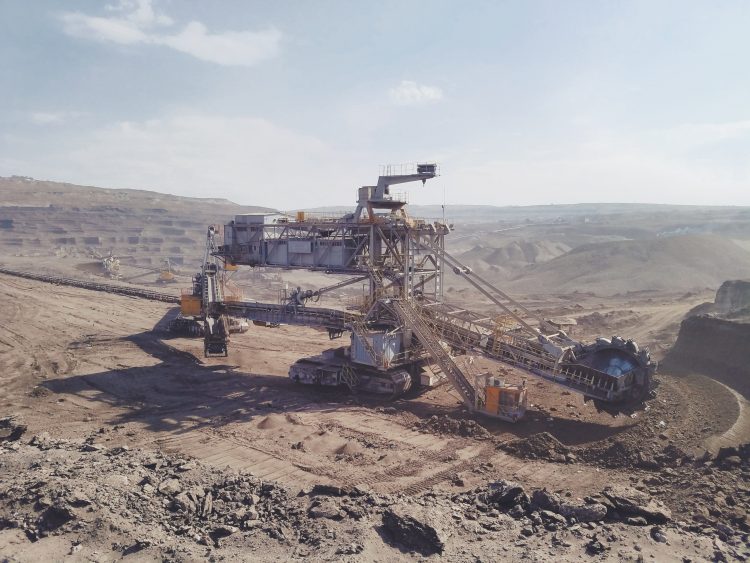
Here are a few creative works that have inspired me:
MATERIAL WORLD. Photographer Peter Menzel visually confronts industrial society with its disproportionate share of material wealth in his 1994 Sierra Club book Material World, A Global Family Portrait. Menzel undertood this project not only to help us appreciate that we all are part of a global family, but also to help us see how differently the rest of the world lives. Typical families from 30 different countries agreed to pose for photographs in front of their houses, with all their household goods spread out around them. Subjects ranged from African peasants living in crude mud huts to North Americans in roomy, climate-controlled suburban manors.
I can imagine a sequel to this book called Energy World, for energy was used to transform materials into the worldly goods shown in these photos. The widening gap between rich and poor has a lot to do with people’s access to energy. While the majority of the world has to get by on limited human and animal muscle power, we the comfortable, affluent minority have an enormous advantage in our ability to make extensive use of petroleum and other fossil fuels.
But the long-term answer to closing this gap in material well-being is not to extend to “undeveloped” countries the financing and technology to make greater use of fossil fuels. The consensus of world atmospheric scientists is that disruptive climate changes lie ahead unless emissions of CO2 and other greenhouse gases are curbed drastically. (See Chapter 14 on climate change.) We need to start immediately making a transition to a world that not only promotes peace, justice, and material well-being for all members of the global family, but also greatly reduces our use of fossil fuels. This means learning to live well on much less energy, since alternative fuels necessarily will be scarcer and more expensive. An Energy World sequel could give us a clearer idea of what such a world would look like.
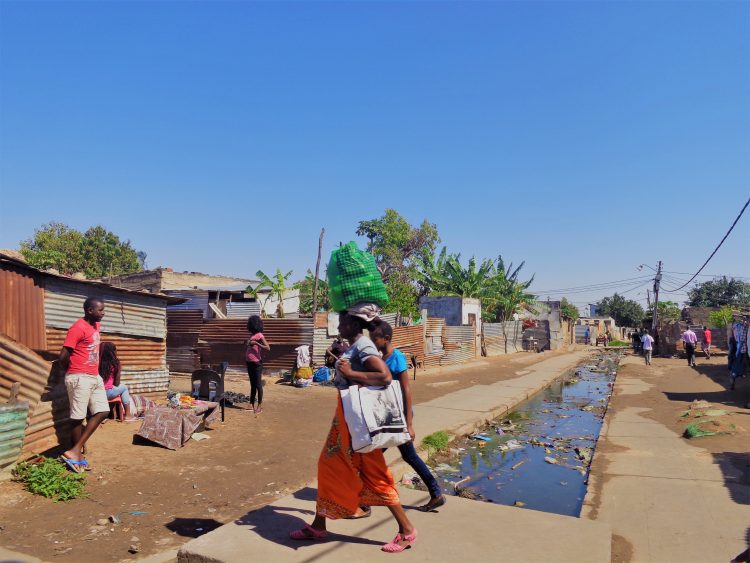
LIVING THE GOOD LIFE. Perhaps the most pointed challenge to the American Dream in modern times came from Scott and Helen Nearing, whose 1950s book, Living the Good Life, How to Live Sanely and Simply in a Troubled World, described their homesteading experience in rural New England. Through hard work, careful management, and Yankee ingenuity, they were able to live simply and richly with few material possessions and little fossil fuel consumption. Family snapshots reproduced in the book show them building stone walls, gardening, and maple sugaring, while finding ample time for simple pleasures. These images reinforce the book’s message that a gentler way of living on the earth is do-able for anyone convinced of the need for it. Thoreau walked away from his experiment in simple living at Walden Pond after only two years; the Nearings kept at it for nearly 50 years.
The traditional country living skills that the Nearings revived (and the new ones they pioneered) in order to achieve their brand of the good life may not be applicable to the billions today who are settled into urban living. But their legacy includes some relevant lessons:
First, their move to the land in the depths of the Great Depression of the 1930s wasn’t something they particularly wanted to do. They suddenly found themselves “outcasts of a dying social order” and were just looking for a way to survive. In the process they acquired habits and skills that turned out not only to be good for their health and happiness but good for the well-being of the planet.
We are still under the shadow of an economic order “built on sand.” Yet it is hard to resist. In our lifetimes we may witness its great fall.
Assuming that our society regains its footing, we may recover basic virtues-thrift, integrity, responsibility, and compassion-that undergird true happiness and sustainability.
Second, by “living as independent as possible of the commodity and labor markets,” the Nearings were anticipating the kind of “eco-economics” that is getting a lot of attention in today’s environmental “think tanks,” such as Lester Brown’s Earth Policy Institute. Through their living example, we are better prepared for the great work of basing the human economy on what Thomas Berry has called “The Great Economy.” As the late Donella Meadows observed, “We don’t get to choose which laws, those of the [market] economy or those of the Earth, will ultimately prevail. But we can choose which ones we will probably live under-whether to make our economic laws consistent with planetary ones, or to find out what happens if we don’t.”
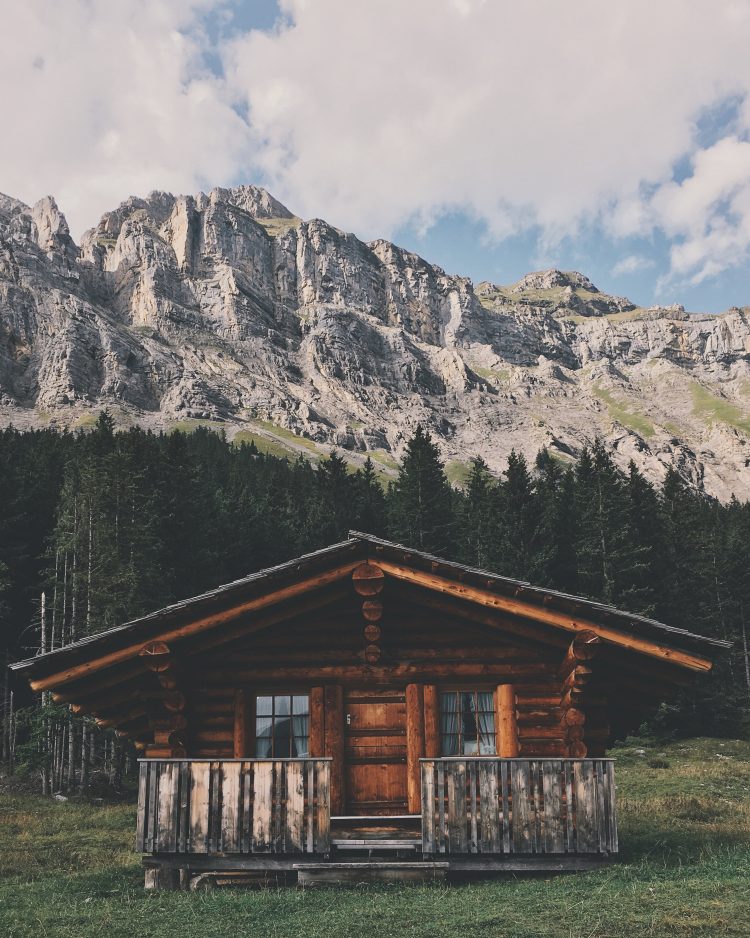
THE END OF NATURE, published in 1989, is Bill McKibben’s passionate response to early signs of major global climate change. He concludes that we have no choice but to cut way back on the use of fossil fuels and to reduce, not just stabilize, human population if civilization as we know it is to survive beyond this century.
Within that imperative, we face some basic choices, McKibben suggests: We can continue the “defiant” approach toward nature and its limits that has characterized the industrial age so far; we can assume that as technology creates problem after problem we can keep one step ahead with more technological fixes. Or we can adopt a more “humble” style, characterized by simpler living, appropriate technology, and respect for the intricate web of nature. To those who say humans aren’t built for such a role, McKibben points to numerous other cultures over the millennia who have survived by following such a path. In the final analysis, he says, we can’t have both a thriving natural world and an economy based on growth, insatiable consumption, and technological domination.
McKibben admits that we are more inclined to choose the “defiant” approach because it is much harder in our culture to imagine simpler living in positive terms. “The difficulty is almost certainly more psychological than intellectual-less that we can’t figure out major alterations in our way of life than that we simply don’t want to. Even if our way of life has destroyed nature and endangered the planet, it is so hard to imagine living in any other fashion….Changing the way we think is at the heart of the question. If it ever happens, the actions will follow,” he says.
The odds of this happening seem slim, McKibben admits, but he finds hope in the positive models of people like Thoreau and Gandhi, who planted powerful positive visions of humble thinking and living in the popular imagination. “Should we choose, we could exercise our reason to do what no other animal can do: we could limit ourselves voluntarily, choose to remain God’s creatures instead of making ourselves gods. What a towering achievement that would be.”
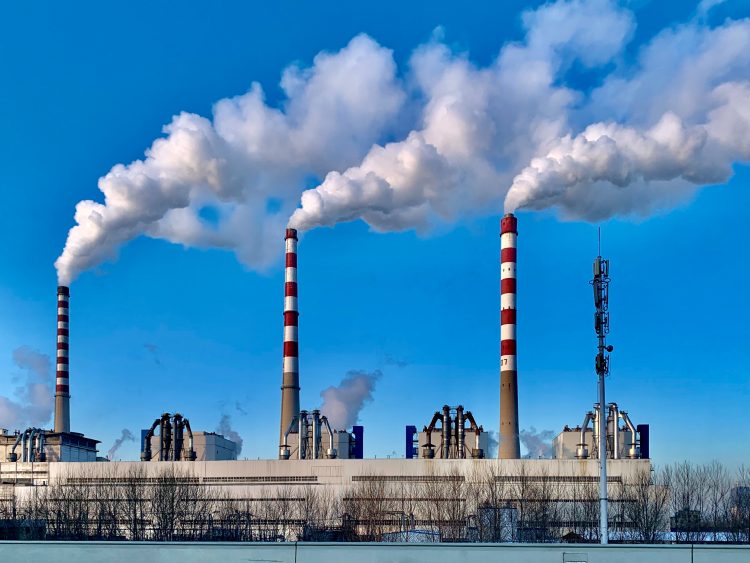
(adapted from If John Woolman Were Among Us-Reflections on the Ecology of Flush Toilets and Motor Vehicles)
FROM OUR OWN AGE of speed and materialism it is interesting to look back at John Woolman’s reaction to the moral cost of stage coach services going “upwards of one hundred miles in twenty-four hours.” The achievement did not impress him. “So great is the hurry,” he wrote, “in the spirit of this world, that in aiming to do business quickly, and to gain wealth, the creation at this day doth loudly groan.”
Imagine what metaphors he would have to reach for to represent the effect on Creation of our present motor vehicle transportation system.
Like the technology of slavery, the motor vehicle system is considered to be an instrument of freedom, making possible a life that yields both wealth and ease. In the case of slavery we can see how the evolution of moral sensibility came to alter this positive valuation of the slave system. I am suggesting that we consider whether further development of moral sensibility should, likewise, alter our positive valuation of the motor vehicle system. I know the suggestion sounds outrageous, but bear with me a bit further.
In 1949, conservationist Aldo Leopold suggested in his Sand County Almanac that the next major step in the evolution of moral sensibility would be the development of a “land ethic.” He offered, as a new ethical standard, the preservation and enhancement of ecosystem stability: “A thing is right when it tends to preserve the integrity, stability, and beauty of the biotic community. It is wrong when it tends otherwise.”
One of the shibboleths of industrial-commercial culture is that technology is neutral and that only human use gives it direction for good or ill. This is simply incorrect. All technologies are biased; they all have a natural bent toward a specific use or range of uses. Just as bulldozers are biased toward landscape alteration, private motor cars are biased toward high mobility. These are not moral judgments but simply identifications of inherent tendencies. We are obligated, having identified the bias of a technology, to judge the social and ecological consequences of its application.
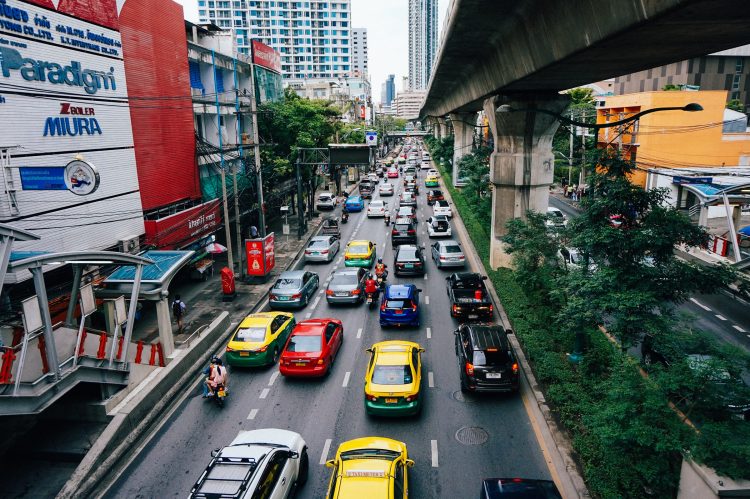
In the case of motor vehicles
1. The internal combustion engine has produced a tidal wave of ecosystem exploitation and biospheric toxification, which is literally unraveling the structural complexity thus far achieved by organic evolution.
2. The internal combustion engine is the principal device which has turned farming from an activity of ecosystem preservation into an activity of industrial extraction, from community accountability to market accountability. The health of the farm has become the health of the balance sheet. Motor-driven traction machines, combined with long-distance truck transport, have placed food security within the production and distribution system, which makes decisions only on the basis of cash profitability.
3. Motor vehicles have ruptured the orderly development and self-renewing patterns of human settlements. First of all, they have depopulated rural areas by concentrating employment in the city. Subsequently they have permitted a new social hybrid: rural residents who practice no rural skills, being entirely dependent on their motorized connection with urban environments. Motor vehicles have undercut family solidarity and the social life of neighborhoods. They have fostered the sense that social problems can be solved by movement in space rather than movement in mind and heart. They have addicted us to a pattern of deficit financing, which in turn preempts our time, energy, and skills, into the quest for a large cash flow. They have addicted us to an unreasonable need for motorized transport, while at the same time depriving us of self-powered mobility, by organizing social and economic life around their required use.
4. The motor vehicle system has allowed and promoted the development of a highly irrational and grossly wasteful economic style. It has fostered the habits of consumerism to the point where they have now, in effect, become a complete political-economic ideology, subverting and supplanting the ideals of liberty and justice.
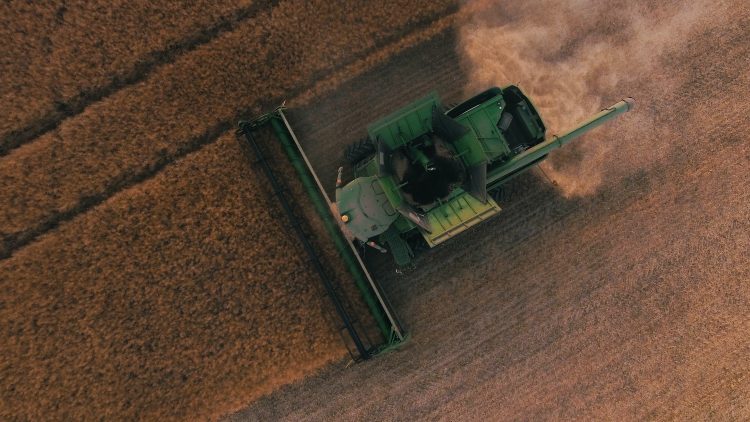
5. Motor vehicles, far from being simply conveniences, impose new and previously unknown levels of mental and physical labor on us. They not only consume more time than they “save,” they preempt a large segment of human intelligence and energy in their design, manufacture, service, and repair, which could be more creatively employed developing a rich social life and in meeting genuine human needs.
6. Motor vehicle exhaust is the single largest source of particulate matter, which combines with atmospheric moisture to become acid rain, snow, and fog. Motor vehicles are a major human health hazard through direct atmospheric pollution. Motor vehicles are a major contributor to the greenhouse effect. Sixty to 80 percent of all air pollution is from vehicle exhaust.
7. The loss of life, injury, and property damage we sustain through indulgence of the motor vehicle system is the annual equivalent to a major war. In the United States alone it amounts to 24 million accidents, 5 million human injuries. 50,000 human deaths, and 365 million animal road kills.
8. The consumptive requirements of the motor vehicle system for natural resources are of vast proportions. In the United States alone it uses half of all the petroleum, 74 percent of all rubber, 63 percent of all lead, and 60,000 square miles of paved-over land. [Editor’s note: The numbers have increased since this was written in 1989. Today there are 2,336,000 miles of paved roads per the CIA information web site (not square miles, so it is a different comparison.)]
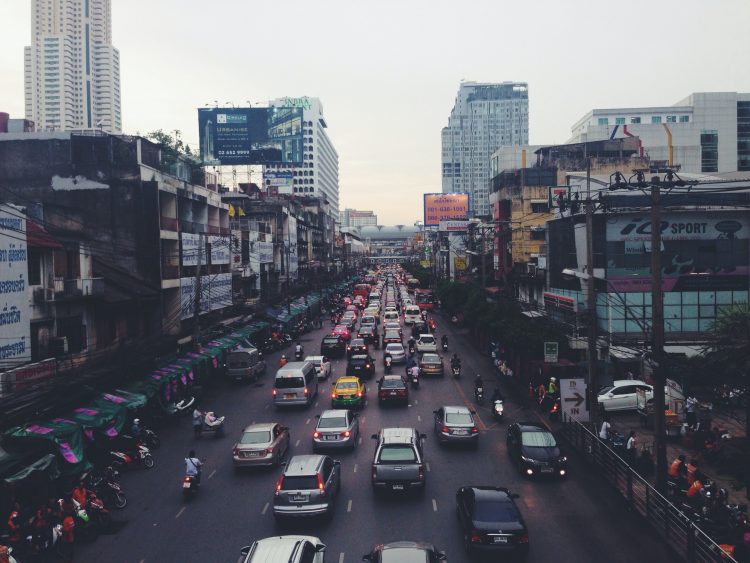
I HAVE CHOSEN this focus on the motor vehicle system because it provides a good example of how great a difficulty we have gotten ourselves into with respect to ecologically sound adaptation. We stand in a condition where to suggest we might come to live without motor vehicle transport, or even significantly reduce our reliance on it, makes one seem odd and out of touch with the so-called “real world.” I would suggest, however, that if we take biospheric health, or even just human health, as our governing focus, it is the motor vehicle system which is out of touch.
The motor vehicle is in the category of “invisible technology.” We cannot even begin to see how it would be possible to live without it. Its position in the production and monetary systems is so pervasive and entrenched that any suggestion of restriction or withdrawal conjures up visions of socio-economic disaster. It will be most interesting to see what happens when the price of oil begins its final precipitous climb, and supplies dwindle to the rationing level.
The motor vehicle system has come to occupy our consciousness with the force of a natural phenomenon. It has cast a mental and emotional harness over both personal and social life. We need constant reminders that this has been done by design, by specific acts of human agency. We know, for example, that General Motors deliberately bought out the electric trolley system of Los Angeles, tore up the tracks, junked the cars, and installed diesel buses. It was just good business. Firestone and Standard Oil got into the act, and the electric trolley was virtually wiped out, or never given a chance, in North America. I tell this story because I want to plant a seed of doubt about the inevitability and necessary continuance of the motor vehicle system.
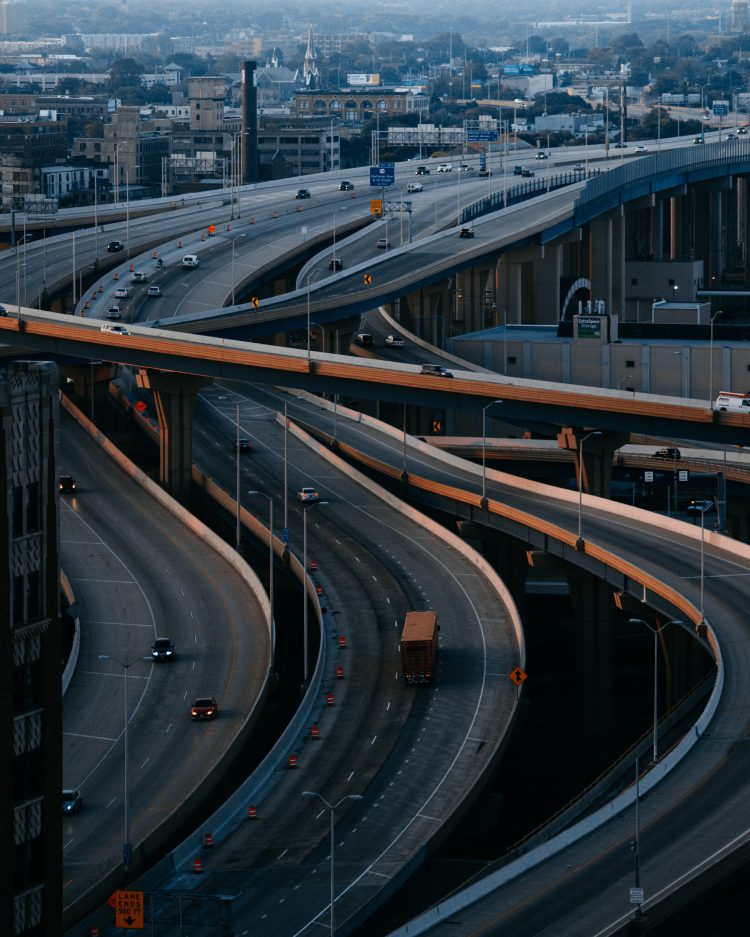
WE ARE IN QUITE THE SAME POSITION with respect to our motor vehicles as John Woolman found many Quakers to be in with respect to their slaves. He wrote:
“Many Friends who keep slaves are under some exercise on that account, and at times think about trying them with freedom, but find many things in their way. And the manner of living and annual expenses of some of them are such that it is impractical for them to set their slaves free, without changing their way of life.”
Those who can design the motor car out of their living and working arrangements are probably making a better contribution to the health of the biosphere than those of us who grow organic market gardens but still run around the countryside in pickup trucks.
The way out of the high energy, industrial market economy trap is, of course, the design and creation of a comprehensive conserver society. In John Woolman’s terms, it means turning away from the snare of “outward greatness” and, I would add, the dream of perfect convenience, to a way of life which appropriates and uses the gifts of Earth in an ecologically sound manner.
(Reprinted from BeFriending Creation, March-April 2001)
READERS OF BEFRIENDING CREATION are well aware of how wasteful our culture is in its use of energy: The average U.S. citizen uses four times the energy of his majority world counterpart. And most of this energy comes from fossil fuel combustion, whose carbon emissions are causing our planet’s climate to change. Certainly this is a major cause for concern. But should our energy use and the resultant global warming be a matter for the spiritual community that reads this publication?
Recently I heard the Rev. Richard Kilmer, Director of the Environmental Justice Office of the National Council of Churches of Christ, tell the North Carolina Interfaith Climate Change Project that global warming is a concern for spiritual communities because “It is an issue of survival; it is an issue of justice; and it is an issue of life-style.”
I agree. The United Nation’s Intergovernmental Panel on Climate Change (ICCP) now predicts warming of 2.5 to 10.4 degrees Fahrenheit between 1990 and 2100. While the types of changes cannot be predicted with certainty, the fact of change is certain. And change will occur much too rapidly for life forms, including humans, to adapt without great suffering and loss of life. Productive farming regions may turn into deserts; flooding caused by rising sea levels will create refugees by the millions; tropical diseases, such as malaria and dengue fever, have already begun to spread to locations where they were previously unknown.
Commenting on the latest ICCP report, Klaus Toepfer, the head of the UN’s Environment Program, said, “The scientific consensus presented in this comprehensive report about human-induced climate change should sound alarm bells in every national capital and in every local community.”
Global climate change is an issue of survival.
The richest countries of the world, the over-developed nations, are primarily responsible for the problem and the poorest countries, the majority world, will be the first to suffer. The United States, with 4 percent of the world’s population, contributes 22 percent of the world’s greenhouse gases. A conservative estimate is that Bangladesh will have 26 million people displaced by the rising sea levels. The rich will, at least temporarily, have the resources to deal with some of the changes. The poor will suffer.
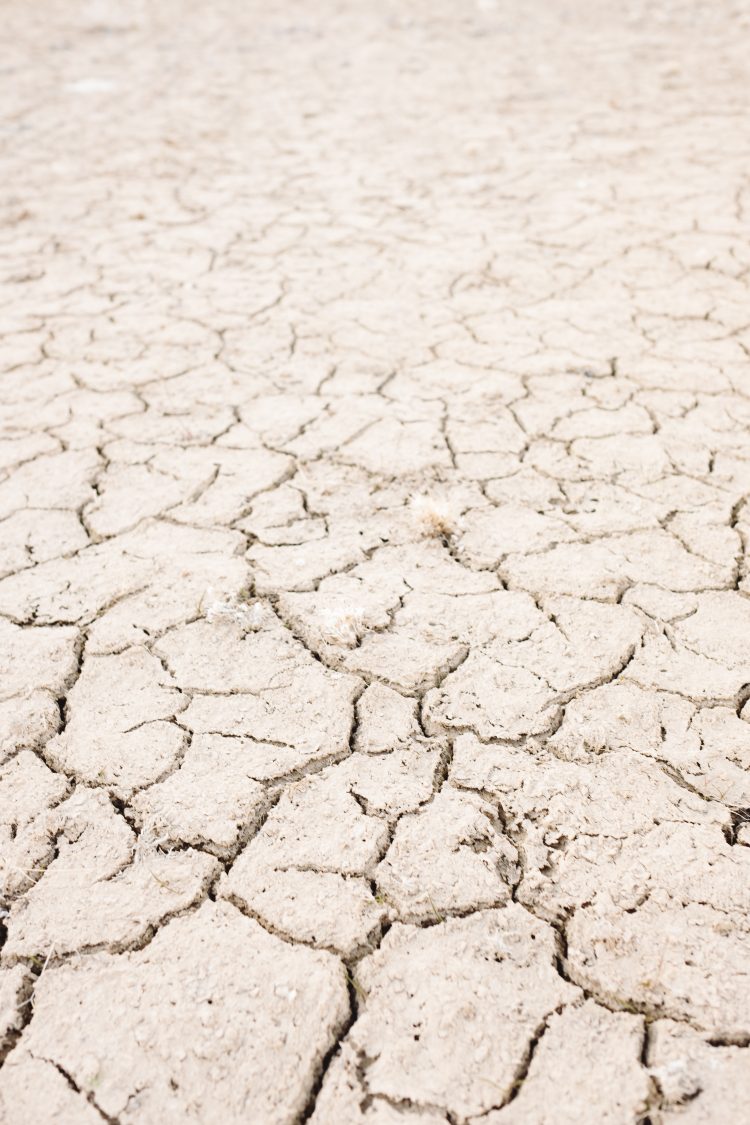
Global climate change is an issue of justice.
The affluent of the world have created the problem through the extravagant use of energy. Fossil fuels are used to provide indoor comfort, transportation, and power for the industries that provide our (mostly disposable) consumer goods. We must examine our practices of consumption. We must reduce; we must seek alternatives; we must simplify.
Global climate change is an issue of life-style.
Yes, we’ll need to make adjustments in our manner of living, but the changes need not be restrictive, prohibitive, or depriving. It is estimated that a 30 percent reduction in greenhouse gases could be achieved through simple energy conservation: home heating, air conditioning, and water heating efficiencies; smarter local and long distance travel choices; and informed decisions that will reduce the energy costs of consumer goods. And of course, we’ll need to see things in a new light.
While energy-saving measures such as insulation, weather-stripping, programmable thermostats, and carpooling provide great results with little effort, nothing is as simple as changing a light bulb.
Since 1880, there hasn’t been much change in the technology of Edison’s invention. The incandescent light bulb is as inefficient as ever. If this device were used for what it does best, we would cup our frigid mitts around it in cool weather and call it Edison’s “hand-warmer.” These bulbs convert only ten percent of electricity to light; 90 percent becomes waste heat. In fact, incandescent means “glowing with intense heat.”
The efficient replacements for these energy hogs are compact fluorescent bulbs (CFLs). Fluorescent means “producing light while glowing with radiant energy.” (That has a Friendly, spiritual ring to it, doesn’t it?) These energy-saving CFLs screw into the same sockets as the “hogs,” and use about a quarter of the energy to produce the same amount of light. In fact, the 15-watt CFLs that I use to replace 60-watt “hand-warmers” produce more light (measured in lumens). And the new bulbs last ten times longer!
The initial cost scares many folks away-they’re costly even after you consider that one CFL (over its life) will replace ten incandescents. But after factoring in the energy savings over the 10,000-hour life, the frugal, ecologically enlightened (catch the pun?) consumer is about $34 to the good, when replacing a single 60-watt “hog.” And the environment is spared 450 to 500 pounds of carbon dioxide-the leading greenhouse gas-not to mention all the other fossil fuel pollutants.

Sure, the savings in money and in pollution will vary with the local utility’s rates and mix of energy sources: coal, oil, gas, nuclear, hydro. But I think you are beginning to see the light (yes, I couldn’t resist).
A few words of advice: CFLs come in a variety of shapes, sizes, and colors. Some are attractive enough for use in hanging fixtures; some demand to be covered by shades. Some might require a special harp (the wire loop thing that holds the shade to the lamp) to fit into your favorite lamp. Some are “cool white”; some are “warm white.” You may want to experiment. Sources: The best selections are found in those dreadful hardware supermarkets. Or you may want to do business with Backwoods Solar, run by a Quaker couple in Idaho (steve@backwoodssolar.com).
Certainly other measures, such as alternative energy sources and international agreements on emissions, are necessary and urgent, but an important first step is to conserve energy at home. So, I encourage BeFriending Creation readers to seek a new light-one glowing with radiant energy. And be sure to tell your friends and Friends.
THE REVEREND DR. RODNEY ROMNEY (retired senior pastor of Seattle First Baptist Church) writes in his book, Wilderness Spirituality: Finding Your Way in an Unsettled World: “I believe we can achieve the Promised Land, not by railing against or destroying our various wildernesses but by moving through them in joyful and deep concern for the health and welfare for our planet and all its life-forms and with a personal resolve to take individual responsibility for our own strength and growth.”
Trying to make decisions about how we travel, how we heat our houses and our water, how we use our water, or how to make responsible purchases has become almost a full time job. At times I feel inundated with information. I just want to close my eyes and hope it all goes away! But it’s not going to go away. With each decision that involves the use of fossil fuels, I must ask myself whether I am acting in accordance with Quaker Testimonies or other sources of my faith. Most petroleum geologists are predicting that global oil production will peak by 2012. As supply declines, demand will continue rising, resulting in sharply increasing prices. How will we function as a society when energy is no longer so cheap and abundant? What are my responsibilities to help make a peaceful and orderly transition?
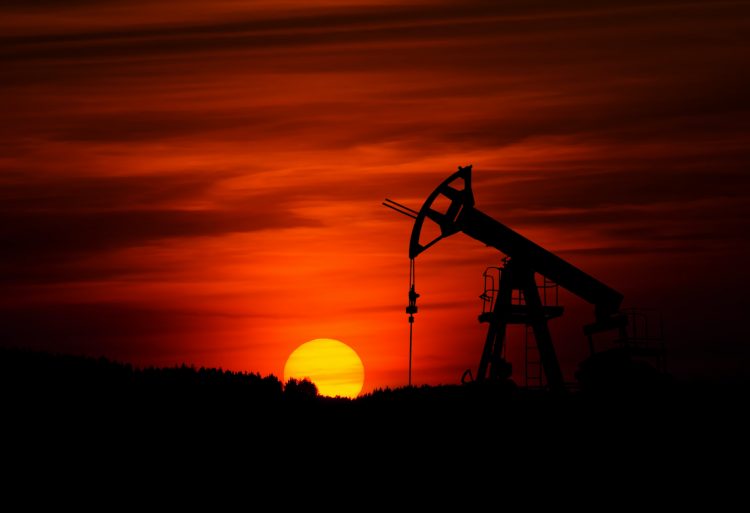
I’d like to begin with where I am now and think how I might change to be living more lightly. In many ways my husband and I are modeling practices that would greatly reduce humanity’s burden on the environment if everyone lived as frugally and carefully. But we know that even this is not enough to secure a sustainable, fulfilling future for our children and grandchildren. There are many tough questions that we must face for their sakes.
We live in the country, in a beautiful, serene place where we enjoy being close to nature. Hey, we can see the stars at night! We are grateful for this privilege, but it is a mixed blessing. We watch with dismay as the countryside fills up with large, expensive houses that don’t even make use of passive solar gain. Many of their occupants commute in SUVs to distant jobs in pursuit of their version of the American Dream. At least our work is at home, so we don’t have to commute. But we are still dependent on an automobile (a 1988 Honda Accord with 240,000 miles) for shopping, occasional meetings, Sunday worship, etc. We live in a solar-electric house, but we use propane for cooking, refrigeration, and heating water. (Natural gas and propane burn cleaner and therefore create less greenhouse gas emissions than oil or electricity which comes from oil or coal burning plants. We still resort to a gasoline-powered generator to recharge the batteries in the winter, when there is often no sun for many days in a row. We heat with wood that we harvest from this land (mostly old or fallen trees), and we grow some of our own food organically. But we still rely on many purchased goods that come at a cost to the environment. We are living far more lightly on the earth than the average North American family, but when we take the “Ecological Footprint Quiz” below we learn that we are still far from living sustainably and equitably.
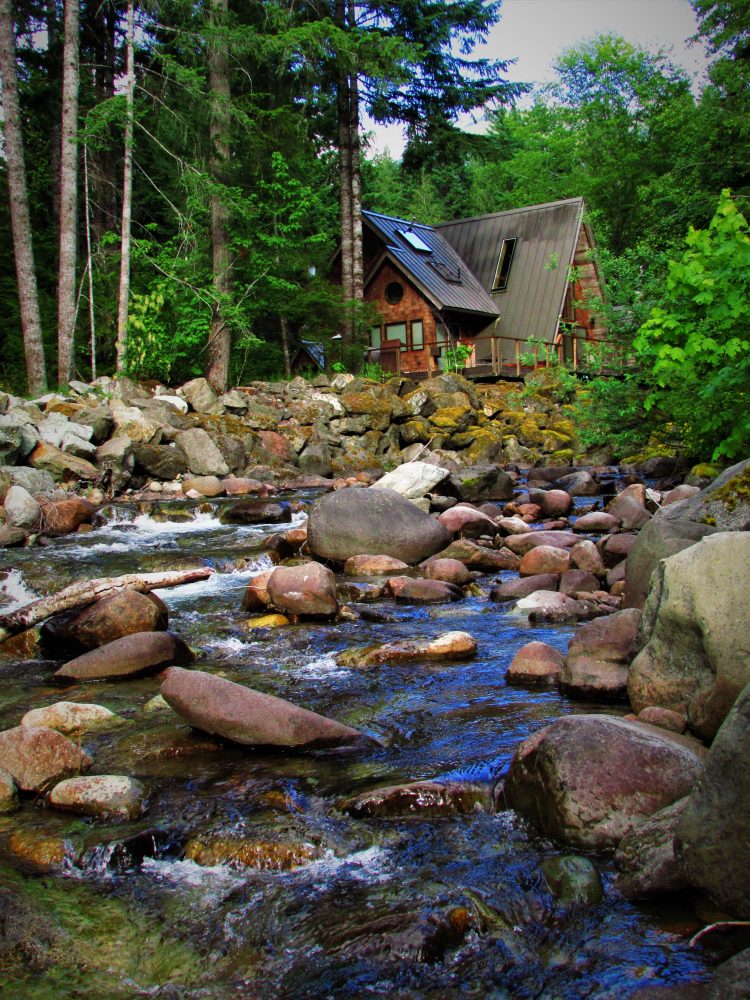
SO WHAT ARE SOME OF THE NEXT STEPS that we can take? We know we can use our car a lot less (this means planning more carefully our trips to town and using bicycles to get groceries from the market five miles away). We can make less use of the backup generator by adjusting our activities more to the amount of sunlight being captured by the photovoltaic panels. We can finish installing those solar hot water panels we bought used a few years ago, to reduce our use of propane for heating water. We can even use our wood cook stove. We can grow more of our own food and buy more locally grown produce. This will involve inconveniences, but the point is, we need to do it, and we know we can do it.
So there you have it-my public confession of what I’ve known for a long time I could be doing, but have found excuse after excuse for putting off. Now I have another motivation, besides caring about the future of my grandchildren, to start turning this long list of “should-dos” into “have-dones”!
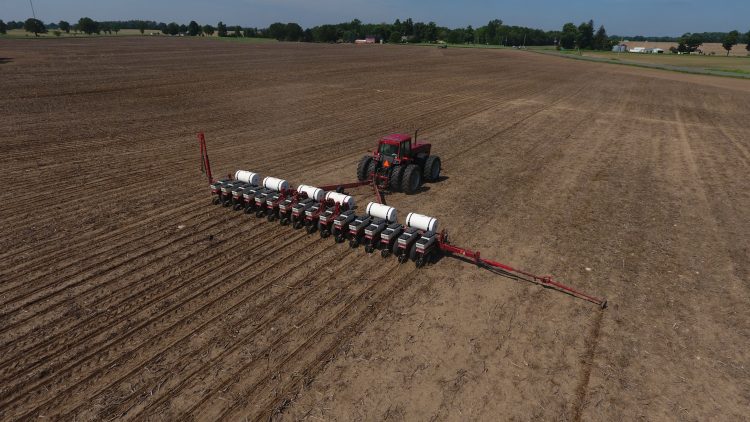
I share this example to portray some of the many ways our lives have slipped steadily into dependence on fossil fuels. In fact I read an article in a magazine recently that talked of “eating our fossil fuels.” The author explained that large-scale farming relies so heavily on fossil fuels for all the machinery and for the fertilizers, pesticides, and herbicides that a lot of food today could be considered a petroleum by-product. And when we buy food that has traveled to us by planes, ships, trains, and/or trucks, even more fossil fuel has been used in our name. One way to look at this is the number of calories of energy in the food we eat in proportion to the calories of energy required to produce it. In pre-industrial agriculture it typically took about one calorie of human and animal energy to produce about ten calories of food energy. The other nine calories came from the sun. In today’s industrialized agriculture, it now takes an average of ten calories of fossil-fuel energy to produce one calorie of food energy! (This is not a misprint!) The contribution of the sun now becomes almost negligible. For some specialty food items that are flown to us from halfway around the world, the calorie ratio must go through the roof! And yet we hear agriculture experts brag about how efficient our country’s food production system is.
The Union of Concerned Scientists (UCS) has identified transportation as the most significant, consumer-related environmental problem. Cars and light trucks generate almost 30 percent of all greenhouse gases, which are a significant contributor to global warming (see other articles on climate change). Food production ranks second in environmentally harmful activities (see Chapter 7). Then the UCS ranks “home heating, hot water, air conditioning, and household appliances and lighting” as the third most harmful of consumer activities. We begin to understand that our own, individual actions do make a difference.

Okay, now that you’ve heard some of the drawbacks of country living. What about life in the city? We have city friends who were able to give up their cars and now get around nicely on bicycles and public transportation. In cities many facilities seem to be used more efficiently. But cities still have huge ecological footprints, because they tend to consume more resources than they produce. So we each must take an inventory of where we are as city, suburban, and country dwellers and look at what changes we can make that make the most ecological sense in our situations. There are no quick and easy solutions. But the longer we wait the harder it becomes to make a difference. New technologies, such as hybrid or electric cars, will play an important role, although if we all traded in our existing cars, somebody else would end up driving them. The most important advance, I believe, will be what happens to our thinking and attitudes.
I ENCOURAGE YOU TO JOIN OTHERS in your faith community or in your neighborhood to form a support group We are swimming upstream in a culture which tells us that “more is better” and that “growing the economy” is our biggest and greatest task. We need each other every step of the way.
One example of group work is the Household EcoTeam Project. From their website: “Neighbors are getting to know one another and are making a difference-and Global Action Plan’s Sustainable Lifestyle Campaign has a lot to do with it! Block by block, people are getting involved with the program which aims to change consumptive behavior to reduce resource use and its impact on the environment. And it works! With the help of a trained coach and a user-friendly guidebook, household team members choose practical actions and support one another in reducing: their garbage on an average of 42 percent, water usage by 25 percent, transportation fuel and CO2 output by 15 percent. Another valuable by-product is saving money. Households on average experience annual savings from their reduction practices of $300.” Contact them at www.envirocenter.org/groups/ecoteams/ecoteams.html.

Another example of a support network that is available is the “What Would Jesus Drive” (WWJDrive) campaign. WWJDrive is organized and sponsored by the Evangelical Environmental Network (EEN), a biblically orthodox Christian environmental organization. “The question, ‘What Would Jesus Drive?’ is a more specific version of the well- known question, ‘What Would Jesus Do?’ Christians ask themselves ‘What Would Jesus Do?’ to help guide them in their daily decisions as disciples (or followers) of Jesus Christ, who lives and reigns in their hearts. As followers, the question actually becomes, ‘Lord, what would you have me do?’ So our specific question then becomes, ‘Lord, what would you have me drive?’ We believe the Risen Lord Jesus cares about what we drive. Pollution from vehicles has a major impact on human health and the rest of God’s creation. It contributes significantly to the threat of global warming. Our reliance on imported oil from unstable regions threatens peace and security.” Their website is www.whatwouldjesusdrive.org.
Many environmentally-friendly options are available today. In some communities, consumers can purchase “green” electricity, (produced by small hydro dams, wind, or solar) through their suppliers. There may be several attractive options for efficient cars when it’s time to replace your fuel guzzler. Did you know that buses and trains use about one-eighth of the resources that airplanes do? Buses are considered the most Earth-friendly mode of long-distance travel, with automobiles being the worst. In an article in BeFriending Creation (November-December 2000), Kim Carlyle noted that “John Woolman walked much of the time. He was uncomfortable traveling by coach because the horses were driven too hard and the post boys were overworked and mistreated.” When Kim explored these ideas in a workshop, the participants came to the conclusion that John Woolman would travel today by Greyhound bus, with the common people. We do have choices and we just need to feel motivated to take advantage of them.

So, by now I’ve gotten you fired up to join a support group, then hopefully start making some changes in your life. Where do you begin? Much has been written about energy use as it relates to our homes and transportation. Look in the resources appendix for suggested books and web sites. I would like to call special attention to the Living Lightly on the Earth-In the City leaflet (which we have included in the back pocket of this book) and the Walking Gently on the Earth booklet, both published by Quaker Earthcare Witness. The list is not exhaustive and most likely no one person can comply with all suggestions, but give it some worshipful thought and see what you can do!
In your home
- Install energy-efficient lighting like compact flourescents. Your local utility may provide helpful information and services. Turn off lights when not in use.
- Install water-saving shower heads and faucet aerators.
- Keep your appliances in good working condition. Periodically vacuum the condenser coils of your refrigerator.
- When replacing appliances, purchase those marked with the “Energy Star” logo.
- Set you water heater thermostat at no more than 140°F.
- Fix leaks promptly. Use water conservatively. Save rinse water and use it to flush the toilet.
- In cold weather, plug air leaks around windows and doors. Check door seals. If your apartment is overheated, rather than opening windows, ask the building superintendent to adjust the heat. If the thermostat is under your control, turn it down at night or when you leave the apartment. using sweaters indoors also saves energy since you can keep the rooms cooler.
- In the summer block sunlight and use fans instead of air conditioners whenever possible.
- If you live in a multi-story building, use stairs rather than the elevator; if there are too many flights, take the elevator part way and walk the rest.
- Shade south and west windows to reduce heat loads.
- Use electricity sparingly in lights, range, TV, and radios.
- Avoid using clothes dryers except for “solar dryers” (the old fashioned clothes line).
- Practice low-maintenance lawn/yard care. Get exercise and use a motorless push mower.
- If the option is available, purchase “green” electricity.
- Recycle 100 percent of what is possible.
How you get around
- Use public transportation as much as possible.
- Use ground transportation (trains and buses) instead of airplanes for long distance travel whenever possible.
- Drive the most fuel-efficient vehicle you can for the size/type car you need and consider purchasing a new fuel-efficient type car when it is time for a replacement.
- Keep your car well-tuned.
- Keep tires properly inflated.
maintain efficient exhaust emission controls. - Consider leasing or sharing ownership of a car.
- Walk or ride a bicycle for short trips.
- Consider moving closer to your job.
- Consolidate or combine car trips. Eliminate unnecessary trips.
- Carpool when feasible.
- Avoid unnecessary engine idling.
- Recycle used motor oil and tires.
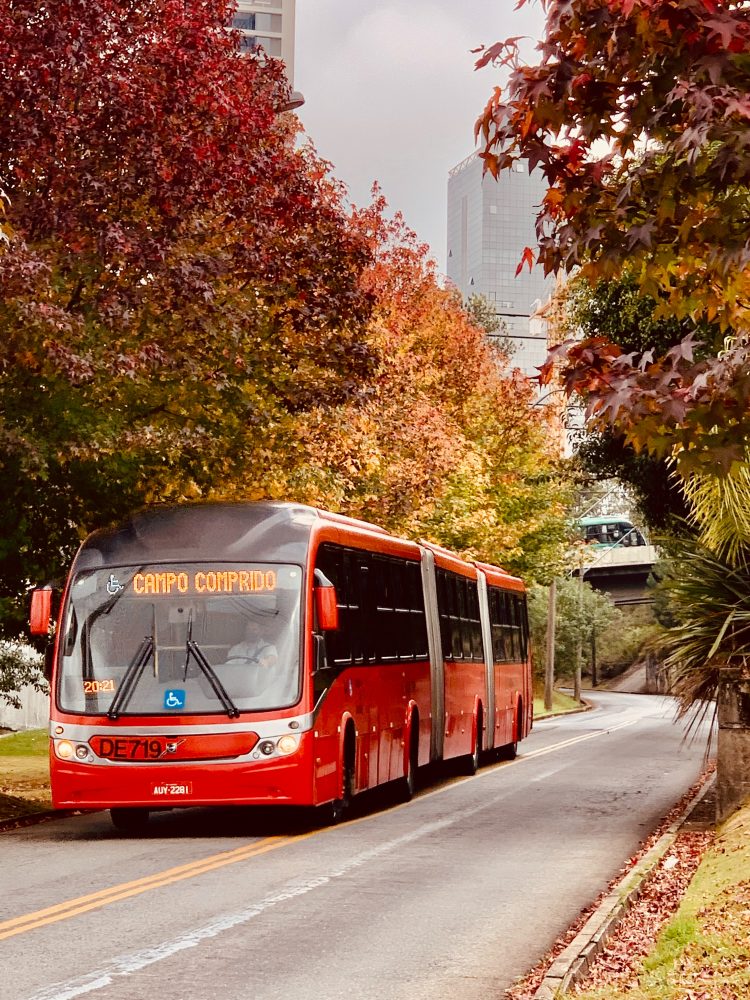
Questions for reflection
- Do I seek to avoid destruction of the environment by conserving energy and relying on renewable forms of energy?
- Have I made an energy audit of my home, to determine how I might use less energy?
If I am from an energy-wasteful home, am I willing to commit myself to a 25 percent reduction in energy use during the next year, and further reduction in future years? - Am I aware of ways to help those in my community who may struggle to meet their most basic energy needs?
- Am I encouraging my legislators-at both the state and federal levels-to initiate programs and laws mandating efficient energy policies in our states and country?
- In encouraging myself and others to reduce their energy consumption, am I clear about the reasons for doing so? [for example: air pollution and global warming; the seeds of war within the misuse of “natural resources” (as in Kuwait, Iraq); spiritual clarity in not supporting activities which harm others.
- Do we treat with reverence the natural resources of the Earth which all living things share interdependently?
- Am I aware of what happens to the waste products that I generate? Do I dispose of that waste in ways that are regenerative, or at least that do no harm?
- Do I accept that there is no “away” to which to throw unwanted items and therefore try to find the best way to recycle everything I no longer need?
- Am I careful to avoid spending and investing money in ways that result in others doing things in the world that I would not do myself?
- Do I try to reduce my use of my automobile by walking, biking, or taking public transportation whenever possible?
- Am I encouraging my legislators-county, state, city or town, and federal levels-to enact legislation which protects natural resources?
- Am I helping to create recycling opportunities where there are none or to help educate about these issues in the schools?
